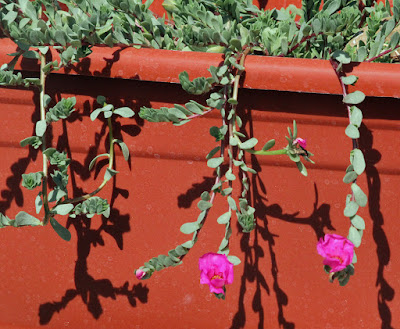Backyard Nature Wednesday: Purslane
Common purslane (Portulaca oleracea) grows throughout many regions of the world. It has been so widespread for so long that its beginnings are a bit hazy, but it is believed to have originated on the Indian sub-continent. It is now found in the wild throughout the Old World, and there is evidence that it reached the Americas in the pre-Columbian era. It is now well naturalized in all of these places, including in my backyard.
If you have purslane growing in your garden, don't just reflexively pull it out as a weed. Consider its ornamental possibilities. And by all means, consider its many uses in the kitchen. You might find that you like its slightly sour and salty taste. Moreover, its health benefits are unquestioned.
If you have purslane growing in your garden, don't just reflexively pull it out as a weed. Consider its ornamental possibilities. And by all means, consider its many uses in the kitchen. You might find that you like its slightly sour and salty taste. Moreover, its health benefits are unquestioned.


Comments
Post a Comment